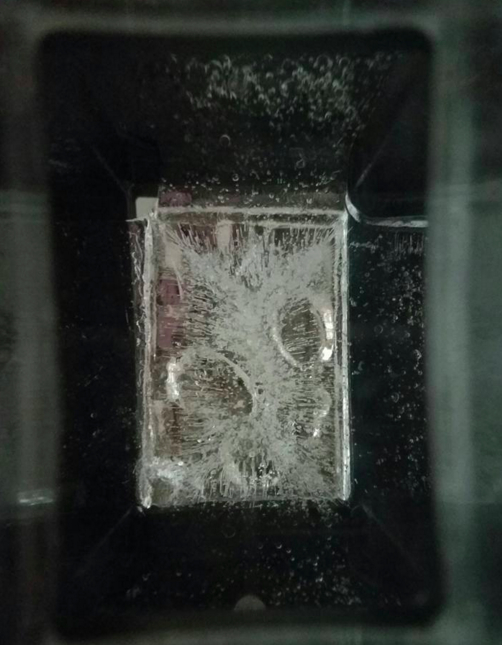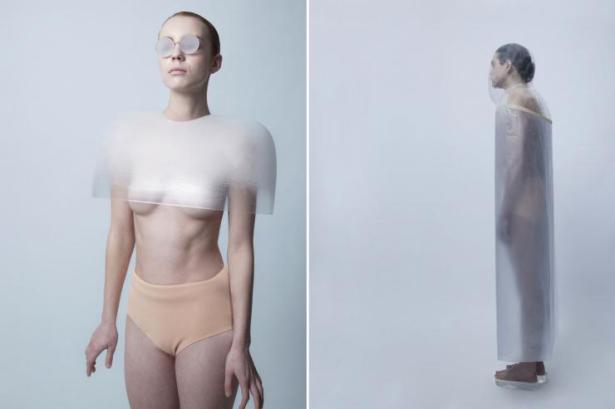NEW!
until April 30th, 2017
1. Open call
In its third edition, INNER NATURE EXHIBITION has consolidated its reputation as an independent international exhibition about art, ecology and contemplation. Its interdisciplinary and decentralized vocation transcends the conventional form of audiovisual festivals to include other strategies for mobilizing and connecting very different territories around the world.
The intention is to contribute to a critical cultural movement that can help, through eco-social commitment, to create awareness and to invite collective participation. The first two editions of the exhibition took place in different art spaces in Spain, France, Finland, USA and Chile. Starting from this year, the show becomes biannual with the aim of widening and strengthening the interaction among all the art centers adhering to INNER NATURE NETWORK.
2. Theme
The third edition will revolve around the theme of water, an essential element for life. Water cycles and availability have been drastically modified by the effects of climate change and pollution, two anthropogenic phenomena that, among others, are causing alterations of ecosystems.
Moreover, the evocative potential of water and its antithesis – the aridity of the desert – is a recurrent element in the work of artists who re-signify traditional symbols and iconography from a more contemporary perspective. Our purpose is to collect some contemporary proposals that tackle this issue through an ecological approach.
3. Participants
Artists working both individually and collectively are welcome to apply. All submissions must be original. If they contain images whose copyright belongs to other authors, the participants must meet the national legislation on copyright.
4. Format
Artists may submit video artworks in formats such as AVI, MOV, MPEG, FLV, ASF, 3GPP, with a good screening quality in order for them to be shown on different types of screens and devices. Their duration must not exceed 5 minutes.
5. Submission of works
Artworks can be submitted until April 30th, 2017 through the online application form available at:
https://innernatureexhibition.com/20open-call/inscripcion-tercera-edicion/
In order to ensure anonymity and transparency in the selection process, artists have to use a pseudonym. Moreover, the works must not contain any information regarding their authors. If the author’s name were visible in the opening or closing credits, it should be covered or pixelated before the submission of the work.
Therefore, an anonymous version of the work must be uploaded to an online repository (like vimeo, youtube, etc.) where it can be viewed at the highest possible quality. Artists should not use their personal youtube or vimeo account but must create a new one in which any reference to their identity is omitted. When completing the online form, artists will include the link and -in case of a private video-Â the password to view the artwork. Files directly submitted to Inner Nature e-mail address or sent on physical formats (DVDs, USB, etc.) will not be accepted.
Selected artists will be notified by e-mail and will be asked to send the original work and personal details within a period of 15 days after the notification. If the organizers do not receive any information after this deadline, the artist and his or her work will not be included in the exhibition. The file submitted in this last phase must be exactly the same as the one that was uploaded online. Any change or re-editing of the work will result in exclusion from the show.
6. Evaluation criteria
The submitted videos will undergo a pre-selection process in which the works that do not meet the minimum technical requirements for a proper display on different types of screens and devices will be excluded. Then, a panel of experts will choose the works that proceed to the final selection according to the following criteria:
– coherence with the exhibition concept
– originality and innovation of the artwork
– formal and technical quality
– meaning and conceptual strength
The final selection will be carried out by the centers hosting the travelling exhibition. The centers’ coordinators will vote in full independence according to the above-mentioned criteria. Focus on the following thematic areas will be positively valued:
– Visibilization of eco-social issues related to water: global warming, waste, ice loss in polar areas, flooding of coastal regions, pollution and overexploitation of aquifers, etc.
– New ecological transition models giving priority to basic human needs over economic and business interests.
– Innovative formulas for effective community management of water resources.
– Critical analysis of the impact of large infrastructures for water exploitation and management.
– Opportunities for critical interventions of new media technologies for alternative approaches to water management.
– Symbolic and evocative aspects related to water, exploring the potential of contemplation for fostering empathy, interdependence and environmental care.
7. Selection results
The selection results will be published on INNER NATURE´s site in July 2017. Selected artists will be notified personally by email and will be asked to send the original work and personal details within a period of 15 days after the notification. In case of shared authorship, one artist shall act as a representative of the collective that created the submitted artwork.
The selected works will be divided into two sections:
- Official section: it includes the most appreciated and best rated artworks. The total duration of this selection will be of approximately 30 minutes.
- Variable section: it consists of highly-appreciated videos that were not included in the official section and whose total duration does not altogether exceed 20 minutes.
In case of a technical tie between two or more videos, the team of the Polytechnic University of Valencia will decide which artwork will be included in the show.
The official section is the core of the exhibition and will be shown at all art centers participating in the project. The official selection may also include the work of an artist of international renown invited by the organizers and whose research is particularly significant in relation to the theme of the show.
In addition, partners and collaborating centers have the possibility to adapt the selection of works to their specific needs and local concerns by adding one, some, all or none of the videos belonging to the variable section. All artworks belonging to the variable section will be included in the opening of the exhibition in Valencia, and will be granted visibility through INNER NATURE website, press releases, publications, social media, etc.
8. Travelling exhibition
The selected videos will be part of collective show which is scheduled to travel to several exhibition spaces in Spain and internationally. The opening of the show will be held in Valencia (Spain) at the IVAM Museum of Contemporary Art (www.ivam.es) in November 2017, concomitantly with the Conference of the Parties (COP 23) to the UN Convention on Climate Change.
The exhibition will then travel to other places in Spain such as Las Palmas de Gran Canaria (Espacio Guia), Teruel (Human and Social Science Department), Salamanca (Espacio Zink), Gijón (PACA), Valencia (La Posta Foundation) and Las Tablas de Daimiel National Park (Cultura de Ribera). Furthermore, it will also be shown in other countries: at Climate, Sustainability & the arts (CSArts) at Temple University in Philadelphia (USA), at the Botanical Garden of Marnay-sur-Seine (France) and El Lobi in San Juan (Puerto Rico).
The organizers will make all the necessary effort to maximize exhibition opportunities during 2018 in order to give the widest possible visibility to the works. Artists will be informed about each exhibition and at the end of the travelling show will receive a certificate including all the venues.
9. Funding
INNER NATURE is a non-profit initiative that runs on volunteer work and depends on grants offered by public institutions related to the mission of the project. Artists agree to show their works in the exhibition without a fee and are offered international exposure. INNER NATURE team works actively to obtain funding: our aim is to create a network as a strategy to gain collective strength and visibility in order to influence public institutions and demand greater commitment to the field of culture and the environment.
Depending on the budget of each edition, our team will consider the possibility of supporting the people and/or the art centers involved in the project to cover expenses related to the acquisition of equipment, display rights, artists, technicians or cultural managers´ fees, etc.
10. Intellectual property rightsÂ
The authors of the selected artworks will transfer their rights for free exclusively for the public screening of the videos in the travelling exhibition. Their authorship will always be acknowledged, contributing to the widest possible visibility of their work. Moreover, the videos will be included in the website of the show (www.innernatureexhibition.com) in the form video fragments or in their entirety, according to the authors’ will.
The organizers can use stills of the artworks or little fragments of the videos (less than twenty seconds) to promote the show through posters, press releases, the internet, etc., always mentioning the authors’ names in the photo credits.
If the videos contain fragments whose copyright belongs to other artists, INNER NATURE EXHIBITION is not responsible for the misappropriation or misuse of those images. The authors must certify that they hold the intellectual property rights of the submitted works according to the legislation in force.
11. Acceptance terms and conditions
Participation in this project implies understanding and acceptance of these terms and conditions in their entirety. The organizers hold the right to make changes and take initiatives, if they contribute to improve the quality and impact of the exhibition.
Download pdf

























